How to Fix ‘Word isn’t Your Default Program for Viewing and Editing Docs’
Several Windows users have been reaching us with questions after being annoyed by the fact that their computer refuses to make Word the default program for opening .docx files even if they click Yes at the prompt and then configure the types that should be opened by the text editor. Most affected users are reporting that they get the ‘Word isn’t Your Default Program for Viewing and Editing Docs’ every time they try to open a .docx file. The issue is not exclusive to a certain Windows version as it’s confirmed to occur on Windows 7, Windows 8.1 and Windows 10.

What is causing the ‘Word isn’t Your Default Program for Viewing and Editing Docs” prompt?
We investigated this particular issue by looking at various user reports and the repair strategies that are being deployed by affected users whenever this prompt appears. As it turns out, there are several different scenarios that might trigger this prompt every time the user tries to open a .docx document:
- Prompt is permitted to appear from Word’s settings – The prompt will only appear as long as it’s permitted to do. If you want to stop the prompt from occurring without resolving the cause of the issue, you can do so by accessing Word’s settings and disabling the prompt from Startup options.
- Windows 10 glitch – As it turns out, this particular issue can also occur due to a glitch that confuses the operating system into thinking that the program for that file type is already configured, when in fact it’s not. Several affected users have reported that the issue was resolved after they modified the default app for .docx file via the Default apps screen.
- A different application is set up as the default – In most case, the prompt is genuine and will signal if Word is not set up as the default application. If this scenario is applicable to your situation, you should be able to resolve the issue by right-clicking on the file and using the context menu to change the default application.
- Corrupted Office installation – File corruption inside the Office installation folder can also be responsible for this particular error. Several affected users have confirmed that they’ve been able to resolve the issue by triggering an Office Repair from the Programs and Features screen.
- Conflicting Office installations – If you have 2 or more Office installations present on your computer, there’s a high chance that this is what’s causing the issue. And it’s not only because a different Word version might be set as the default – Windows has a tendency of glitching the default app in situations where multiple Office installations are present at the same time. In this case, you should be able to resolve the issue by uninstalling every non-necessary Office installation.
Method 1: Disabling the prompt from Word’s Settings
If you’re looking for the fastest fix possible, the quickest way to do it is to simply prevent Word from ever displaying the message again. But keep in mind that this will not resolve the underlying issue that is triggering the prompt – Word will still not be the default program.
If you are perfectly fine with the fact that Word is not the default text editor, follow the steps below to re-configure Word to stop displaying the ‘Word isn’t Your Default Program for Viewing and Editing Docs’ prompt.
Here’s a quick guide on disabling the prompt by disabling the “Tell me if Microsoft Word isn’t the default program for viewing and editing documents” option from Word’s options:
- Open Microsoft Word and go to File > Options using the ribbon bar at the top of the screen.
- When you’re inside the Word Options screen, select the General tab from the vertical menu on the left, then move over to the right pane.
- On the right pane, scroll down to Startup options and uncheck the box associated with ‘Tell me if Microsoft Word isn’t the default program for viewing and editing documents’.
- Once the box has been unchecked, click Ok and close your Word editor.
- The next type you try to start Word, you should no longer encounter the ‘Word isn’t Your Default Program for Viewing and Editing Docs’ prompt.
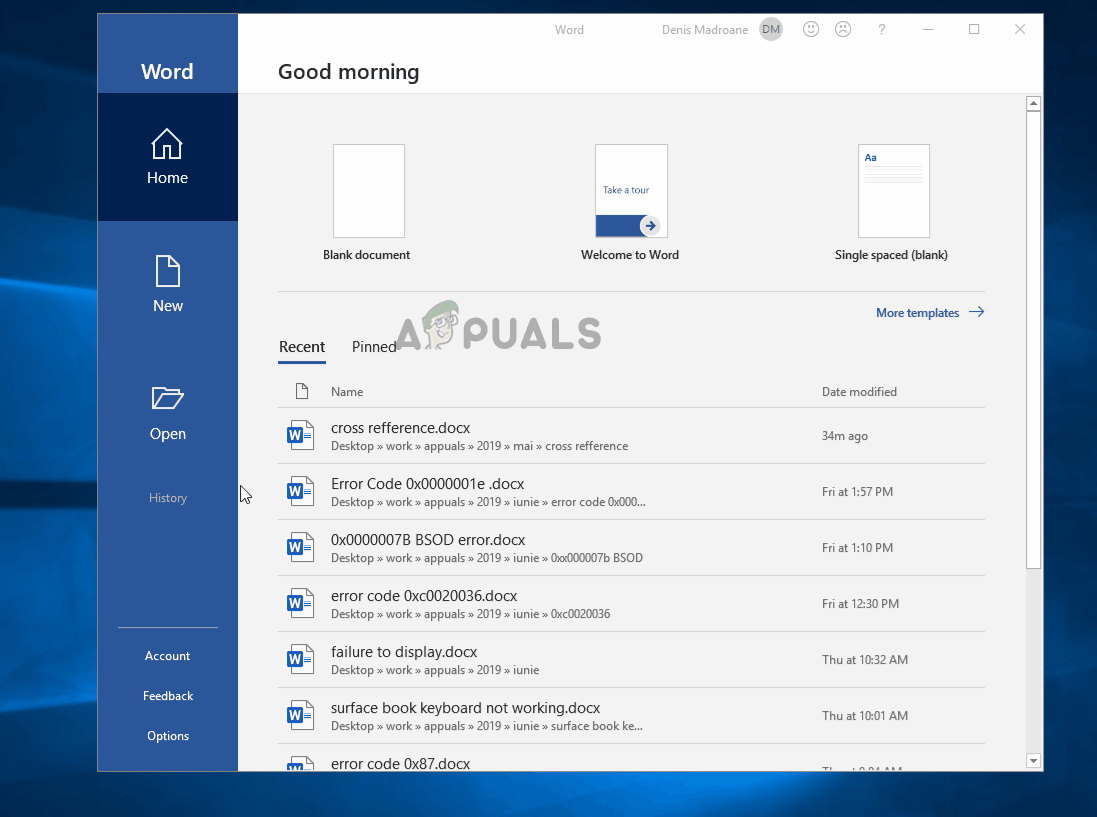
If the prompt is still occurring or you’re looking for a viable fix (not a workaround), move down to the next method below.
Method 2: Changing the default app for .docx
In certain situations, this issue can also occur due to a glitch that prevents the default application for the .docx format from being changed automatically after the user does this via the prompt. In this case, you should be able to resolve the issue by accessing the Default Apps screen (from the Settings app) and modifying the default app for the .docx file type.
Several affected users have reported that this procedure worked for them flawlessly on Windows 10. Although we haven’t been able to confirm this procedure on other Windows versions, it’s still worth a try if you’re on an older version.
Here’s a quick guide on changing the default app for .docx:
- Make sure you’re logged into a Windows account that has administrative privileges.
- Press Windows key + R to open up a Run dialog box. Then, type “ms-settings:defaultapps” inside the text box and press Enter to open up the Default apps tab of the Settings tab.
- Once you’re inside the Default apps window, scroll down to just above the Choose your default apps section and click on Choose default apps by file type.
- Wait until the file type window loads up (it might several minutes if you’re using a traditional HDD).
- When the list is loaded up, scroll down to the .docx format and click on the + icon associated with it.
- Then, select Word from the list of compatible applications.
Note: Even if Word is already the default option, click on it and select it once again for refreshing purposes. - Once the change is made, restart your computer and see if the issue is resolved once the next startup sequence is complete.
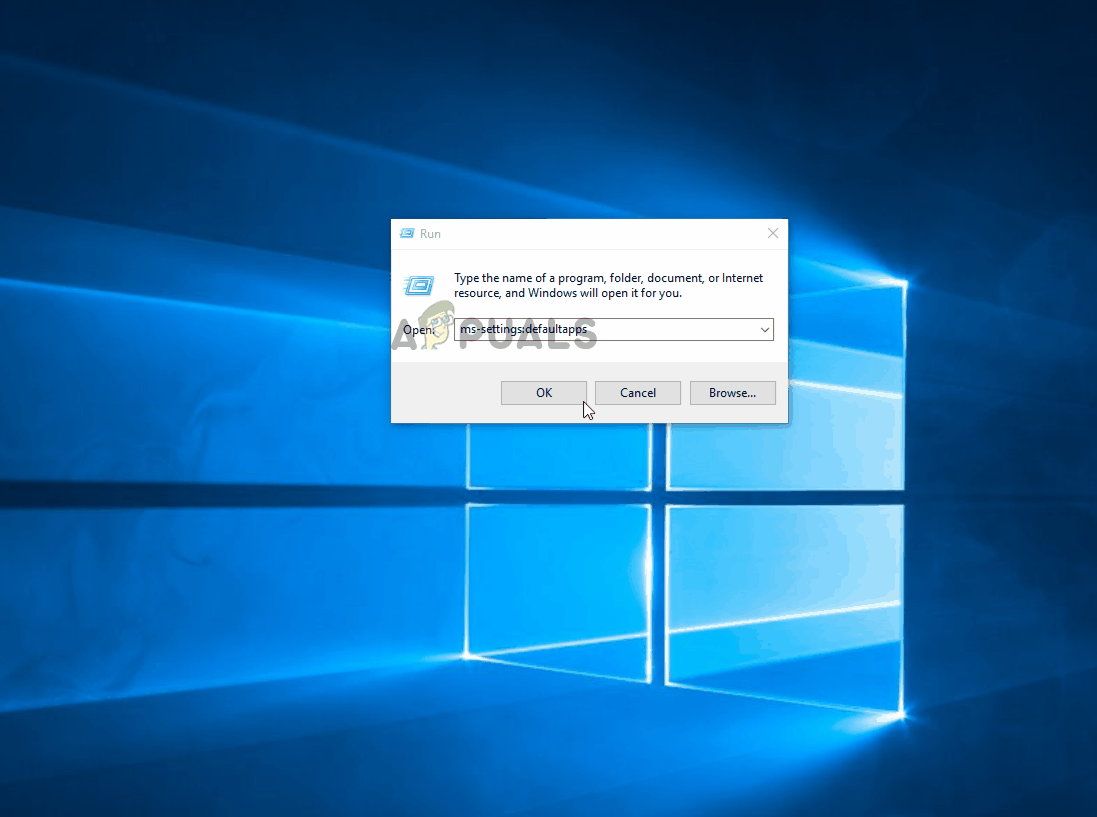
If the same error message is still occurring, move down to the next method below.
Method 3: Choosing a different text editor as the default
There’s also speculation that the issue can also occur due to a glitch that makes Windows think it’s opening a different file type.
As weird as this might sound, some affected users have reported that they were able to resolve the issue by setting a different application as the default (Notepad) first, before changing the default back to Word. This can easily be done by right-clicking on the .docx file and choosing Open With…
Most affected users have reported that after doing this, the file icon changed to the correct one and the ‘Word isn’t Your Default Program for Viewing and Editing Docs’ prompt is no longer occurring.
Here’s a quick guide on working around the glitch that might cause this issue:
- Navigate to the location of the .docx document that you’re having issues with. Once you find the file, right-click on it and chose Open With… from the context menu.
- From the next menu click on More Apps, then choose Notepad (or a different text editor) and make sure to check the box associated with Always use this app to open .docx files before clicking Ok.
- Once the icon changes accordingly, right-click on the file again and select Open With…, but this time click on choose Choose another app.
- From the next menu, select Word again to set it as the default app and check the box associated with Always use this app to open .docx files before clicking Ok.
- Restart your computer and see if the issue is resolved by trying to open another .docx file once the startup sequence is complete.
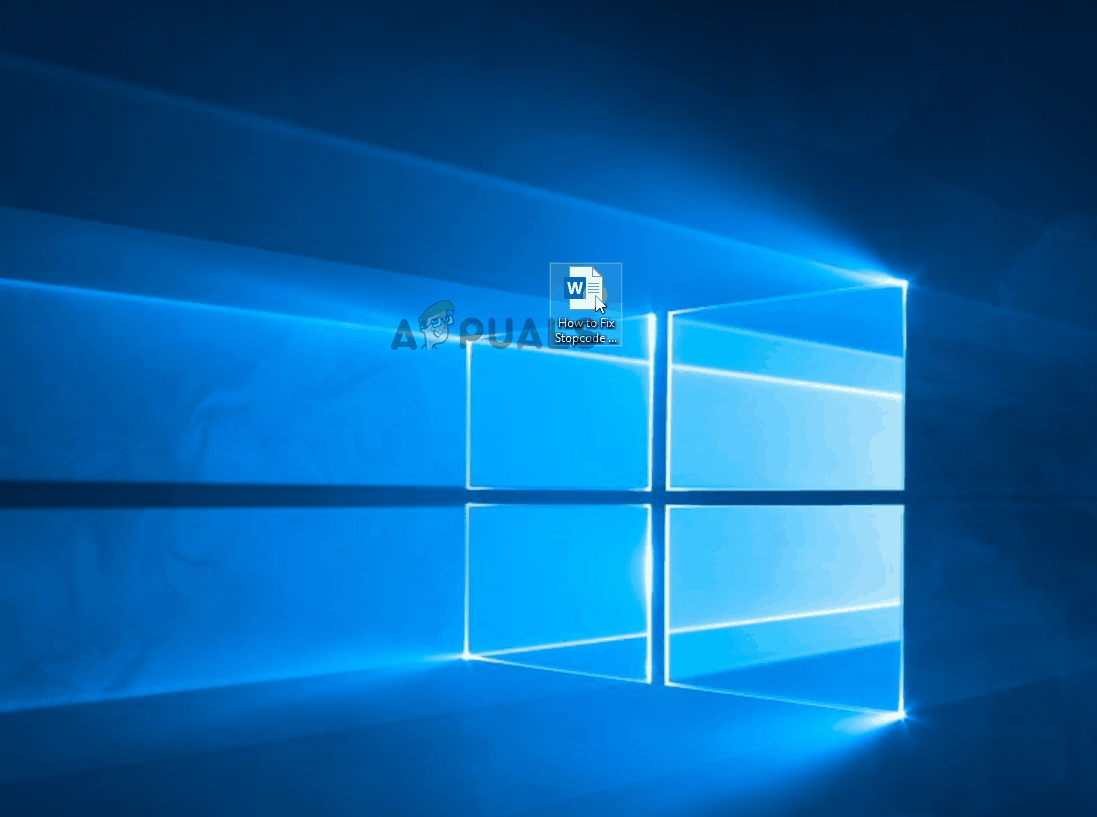
If the same ‘Word isn’t Your Default Program for Viewing and Editing Docs’ prompt is still appearing, move down to the next method below.
Method 4: Repairing the office installation
Based on several different user reports, this particular issue can also occur due to file corruption inside the Office installation folder. There are a few confirmed reports where affected users have managed to resolve the issue by performing an Office installation repair.
This procedure is way simpler than it sounds – the repair strategies are applied automatically. All you need to do is initial the repair procedure.
Here’s a quick guide on repairing the Office installation in order to resolve the ‘Word isn’t Your Default Program for Viewing and Editing Docs’:
- Press Windows key + R to open up a Run dialog box. Next, type “appwiz.cpl” inside the text box, then press Enter to open up the Programs and Features screen.

Type appwiz.cpl and Press Enter to Open Installed Programs List - Once you’re inside the Programs & Features screen, scroll through the list of applications and locate your Office installation.
- Once you see it, right-click on it and choose Change / Repair from the newly appeared context menu.
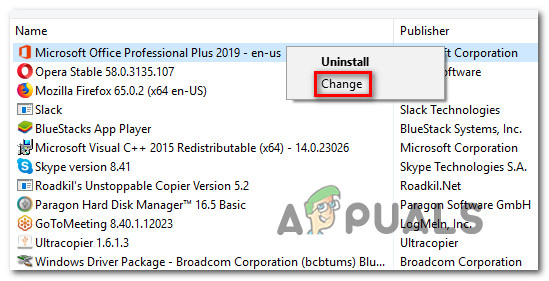
Changing the Microsoft Office installation - Wait until the repair prompt loads up, then click on Quick Repair followed by Repair button. Once the procedure has been initiated, wait until the process is finished.
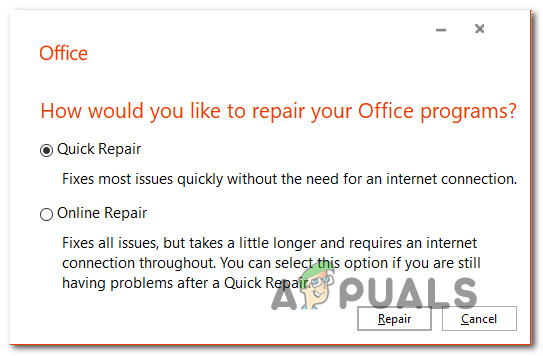
Repairing the Office installation Note: don’t close the installation before the procedure completes, otherwise you risk further file corruption.
- When the process is finished, restart your computer and see if the issue has been resolved at the next startup.
If the same ‘Word isn’t Your Default Program for Viewing and Editing Docs’ prompt is still occurring when you open a .docx document, move down to the next method below.
Method 5: Uninstalling any other Office Suite installations
As it turns out, this continuous ‘Word isn’t Your Default Program for Viewing and Editing Docs’ prompt can also occur in situations where a computer has multiple Office installations that end up conflicting with each other. This ends up confusing Windows, which becomes unable to choose one default app from all the available office installations.
Several affected users have reported that they’ve been able to resolve the issue by uninstalling the older or the unnecessary Office installation. This ended up resolving the conflict that was confusing the operating system. After doing so and restarting their PC, most affected users have reported that the ‘Word isn’t Your Default Program for Viewing and Editing Docs’ prompt stopped occurring altogether.
Here’s a quick guide on uninstalling any unnecessary Office installation:
- Press Windows key + R to open up a Run dialog box. Then, type “appwiz.cpl” and press Enter to open up the Programs and Features window.

Type appwiz.cpl and Press Enter to Open Installed Programs List - Once you’re inside the Programs and Features window, scroll down through the list of applications and locate the Office installation that is not relevant to you. Once you found it, right-click on it and choose Uninstall from the context menu.
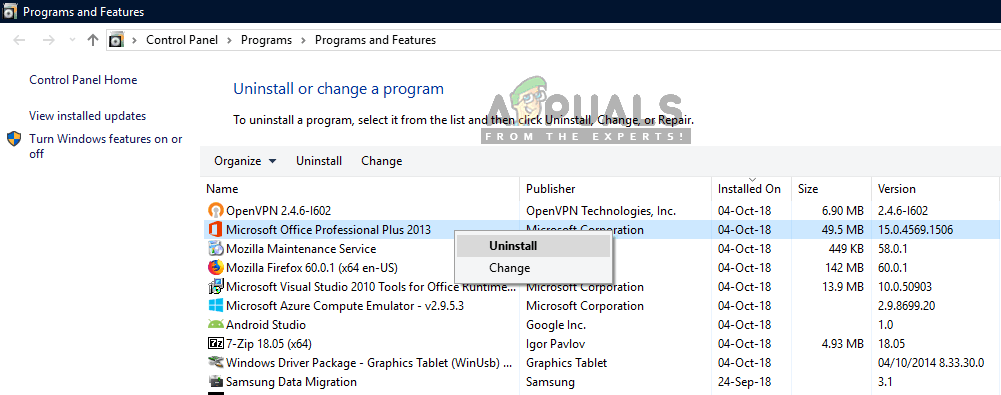
Uninstalling the non-relevant Microsoft Office installation - Inside the uninstallation screen, follow the on-screen prompts to complete the software uninstallation, then close the uninstaller and restart your computer manually if you’re not automatically prompted to do so.
- At the next startup, see if the issue has been resolved by trying to open another .docx file.




